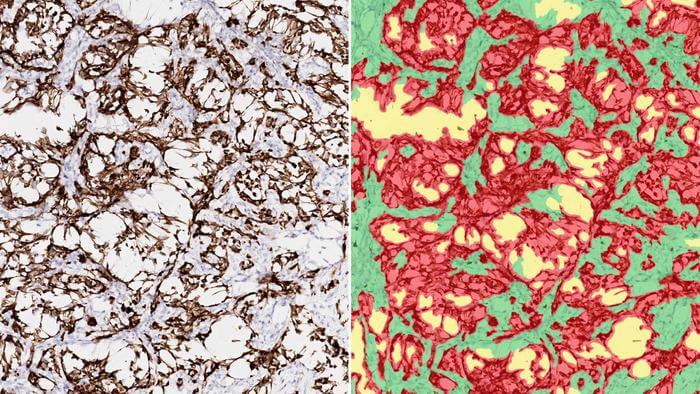COLD SPRING HARBOR, N.Y. — Prescription steroids are becoming a common part of immunotherapy treatments for cancer patients. However, a new study warns that these drugs may actually hinder efforts to beat the disease. Researchers in New York say this discovery might help to clarify why some cancer patients do not respond effectively to immunotherapy drugs designed to destroy tumors.
Scientists indicate that the intake of glucocorticoids (GCs) stimulates a protein associated with poorer treatment outcomes.
“GCs are very powerful suppressors of immunity and are consequently used to treat autoimmunity,” CSHL Assistant Professor Tobias Janowitz says in a media release.
Janowitz explains that autoimmunity is when the immune system attacks healthy cells.
“We’ve previously shown that GCs can also break cancer immunotherapy. Now, here’s perhaps a clue into how they’re doing it.”
Patients with asthma, arthritis, and eczema are often routinely prescribed steroids. Immunotherapy, which harnesses the body’s own immune system to identify and kill cancer cells, can be delivered as tablets, injections, or inhalation treatments. However, patients sometimes experience side-effects that GCs can alleviate.
Unfortunately, these GCs also generate a protein named CyC (Cystatin C). Higher levels of this protein can disrupt the effectiveness of immunotherapy.
These results are supported by data from the UK biobank, which maintains comprehensive genetic and health information on approximately half a million British citizens. Cancer patients who were predisposed to produce CyC in response to GCs displayed a poorer overall survival rate.
Moreover, these patients were less likely to benefit from treatment, suggesting that CyC production within a tumor might contribute to the failure of immunotherapy. Experiments in mice further confirmed this discovery. When a CyC-producing gene was eliminated, rendering it absent in tumors, these tumors grew at a slower pace.
Scroll down to see 10 different varieties of glucocorticoids

“It’s really powerful to come at this from multiple angles and support the findings through many approaches,” says Assistant Professor Hannah Meyer, a CSHL scientist and expert in quantitative biology. “Clever genetic models gave us some indication of which experiments to design to help us answer the question of what this molecule does.”
Prof Janowitz plans to continue studying CyC. He hopes this could greatly help future patients.
“The research has given me an impetus to find out more about the function of this molecule, specifically in the context of cancer immunotherapy,” Prof. Janowitz concludes. “Perhaps its function can be targeted to enhance the success of cancer immunotherapy.”
The study is published in the journal Cell Genomics.
Which drugs count as glucocorticoids?
There are several types of glucocorticoids. Here is a list of commonly used glucocorticoids in medicine:
- Hydrocortisone (Cortisol)
- Cortisone
- Prednisone
- Prednisolone
- Methylprednisolone
- Dexamethasone
- Betamethasone
- Triamcinolone
- Beclomethasone
- Fludrocortisone (this is primarily a mineralocorticoid, but does have some glucocorticoid activity)
These medications vary in potency and in the duration of their effect. They are used in different conditions based on these characteristics. For example, hydrocortisone and cortisone are short-acting glucocorticoids used for replacement therapy in adrenal insufficiency and as anti-inflammatory agents, while dexamethasone is a long-acting glucocorticoid often used in severe allergic reactions, certain brain tumors, and as part of chemotherapy regimens.
You might also be interested in:
- Steroid use can impair testicular function for many years, study warns
- Cancer cure could be uncovered from patient who survived a dozen tumors
- New drug that destroys deadly brain tumors could reach patients within 5 years
South West News Service writer Mark Waghorn contributed to this report.

